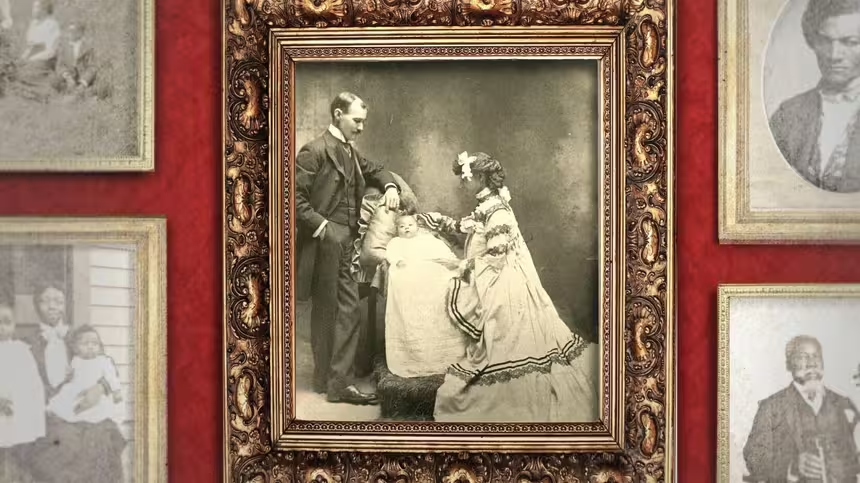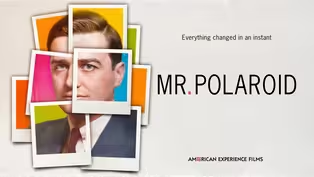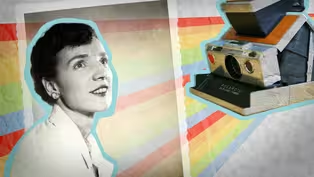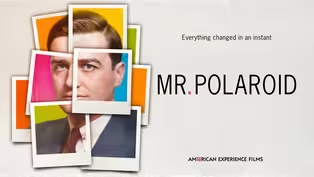
Why do people shake Polaroid pictures?
Clip: Season 37 Episode 3 | 1m 58sVideo has Closed Captions
We were told to "shake it like a Polaroid picture". But what if we got it wrong?
In 2003, Outkast famously told us to "shake it like a Polaroid picture". But what if they—and the rest of us—got it all wrong?
Problems playing video? | Closed Captioning Feedback
Problems playing video? | Closed Captioning Feedback
Corporate sponsorship for American Experience is provided by Liberty Mutual Insurance and Carlisle Companies. Major funding by the Alfred P. Sloan Foundation.

Why do people shake Polaroid pictures?
Clip: Season 37 Episode 3 | 1m 58sVideo has Closed Captions
In 2003, Outkast famously told us to "shake it like a Polaroid picture". But what if they—and the rest of us—got it all wrong?
Problems playing video? | Closed Captioning Feedback
How to Watch American Experience
American Experience is available to stream on pbs.org and the free PBS App, available on iPhone, Apple TV, Android TV, Android smartphones, Amazon Fire TV, Amazon Fire Tablet, Roku, Samsung Smart TV, and Vizio.
Buy Now

When is a photo an act of resistance?
For families that just decades earlier were torn apart by chattel slavery, being photographed together was proof of their resilience.Providing Support for PBS.org
Learn Moreabout PBS online sponsorship1-2-3-4 “My baby dont mess around...” You couldnt turn on the radio or watch music videos in 2003 without hearing this song, with its insanely catchy breakdown section.
‘Hey Ya captured the gesture everyone does after taking pictures with an instant camera.
But turns out Andre 3000 and the rest of us got it wrong.
Because the last thing you want to do with a Polaroid picture is... shake it.
So why do we wave those photos around?
You have to go back to 1950 to find out.
Polaroid was a massive post-war success story.
With instant photography, its founder, Edwin Land, invented a groundbreaking technology, and Polaroid cameras were flying off shelves.
But soon the company had a crisis on its hands.
Its latest game changing innovation, Type 41 black-and-white film, had a huge problem.
After only a few months, the pictures people took were starting to fade.
That's not a big deal for conventional photos, which are printed from negatives.
But with Polaroid, that special snapshot of someone's wedding was the only one in the world.
Customers were freaking out.
The company's crack researchers attacked the problem and came up with a solution, literally.
Starting in 1951, every roll of film came with a little vial of liquid that Polaroid employees called The Coater, and after a photo developed, customers would coat their prints with it.
Chemistry may have stopped the fading, but it came with a catch after you treated the pictures, they stayed wet for around 15 minutes.
So the natural impulse, after applying the liquid, was to shake the picture to help it dry.
The solution saved the company from disaster, and after more research and development, prints no longer needed the coater.
But by theneven though waving a Polaroid around can actually damage the photo by causing its film to separate people still couldn't help but shake it.
For more about the epic riseand fall of an innovative icon, check out Mr. Polaroid, on American Experience.
Video has Closed Captions
Preview: S37 Ep3 | 9m 18s | Watch a preview of Mr. Polaroid. (9m 18s)
Video has Closed Captions
Clip: S37 Ep3 | 3m 8s | The women behind the camera. (3m 8s)
Video has Closed Captions
Preview: S37 Ep3 | 1m 45s | The story of Edwin Land, whose iconic Polaroid camera let everyone instantly chronicle their lives. (1m 45s)
Providing Support for PBS.org
Learn Moreabout PBS online sponsorshipSupport for PBS provided by:
Corporate sponsorship for American Experience is provided by Liberty Mutual Insurance and Carlisle Companies. Major funding by the Alfred P. Sloan Foundation.




















